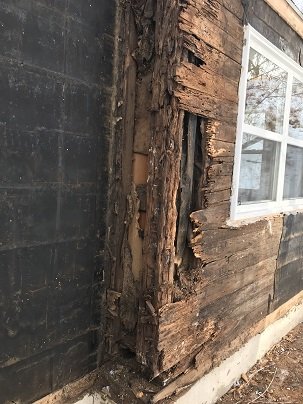Wood siding can be moisture tested with non invasive surface scanning and then followed up with pin probe testing at suspect areas.
Will moisture behind vinyl siding dry up.
Maybe you re putting on an addition or finishing off your basement or maybe you are just about to undergo a major renovation that requires taking the existing wall down to the studs.
It wicks up from beneath trickles in from above and blows in through the seams between siding pieces.
Even though vinyl siding is durable it isn t immune to water intrusion.
Whether you are doing it yourself or hiring a contractor it is a helpful to know a little about proper.
Unfortunately many people install it with a foam backing which then ends up trapping the moisture behind the siding where it has no place to go.
Reinstalling the siding with the proper water resistant barrier underneath it.
Although vinyl does a great job of keeping water out it does not offer a complete waterproof design.
The house is electric heat in ceiling but is tightly insulated and has a moisture bearier.
Old siding removed tyvek installed before siding siding has a drop in foam backer.
Composite composite siding such as james hardie or lp smartside can be tested the same way that wood siding tested using a combination of non invasive and pin probe testing.
You re building a wall.
This is on east wall only from ceiling line down mainly at ceiling line.
To further protect the home a waterproof barrier should be installed between the siding and the home.
Vinyl siding is itself water resistant and when it s installed without backing it can act as a natural rainscreen allowing water to drain out from behind it.
Why is there moisture behind my siding.
Moisture penetrates even the most carefully installed and sealed exterior siding in several ways.
How to prevent water from flowing under vinyl siding.
Therefore the home must have a tight water resistant barrier underneath the siding to prevent water problems such as dry rot.
To sum it up house wrap is a lightweight paper like material that is most often used to completely cover the house directly on top of the sheathing and behind the vinyl siding.
Its primary purpose is to prevent air and water leaks that may have seeped past the vinyl exterior.
Whatever your reason you are now looking at finishing a new wall.
For homes with vinyl siding many homeowners are under the false assumption that vinyl is waterproof.
About 4 5 feet up the wall is dry on the outside we have not taken the drywall completely off the inside of the closet only 2 feet up.
A client has moisture dripping from behind vinyle siding causing a stain.




























